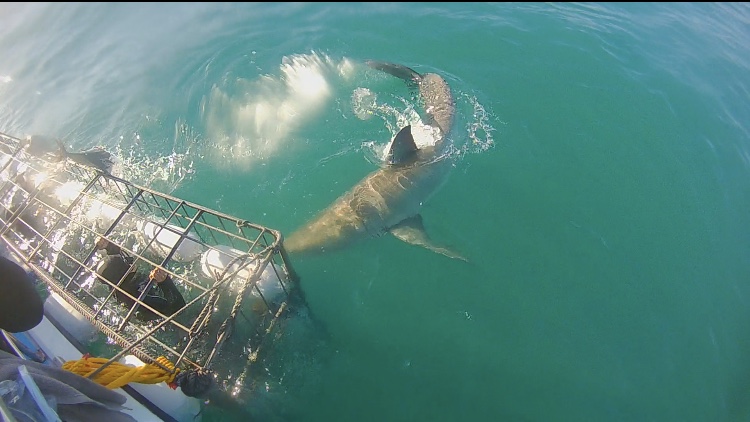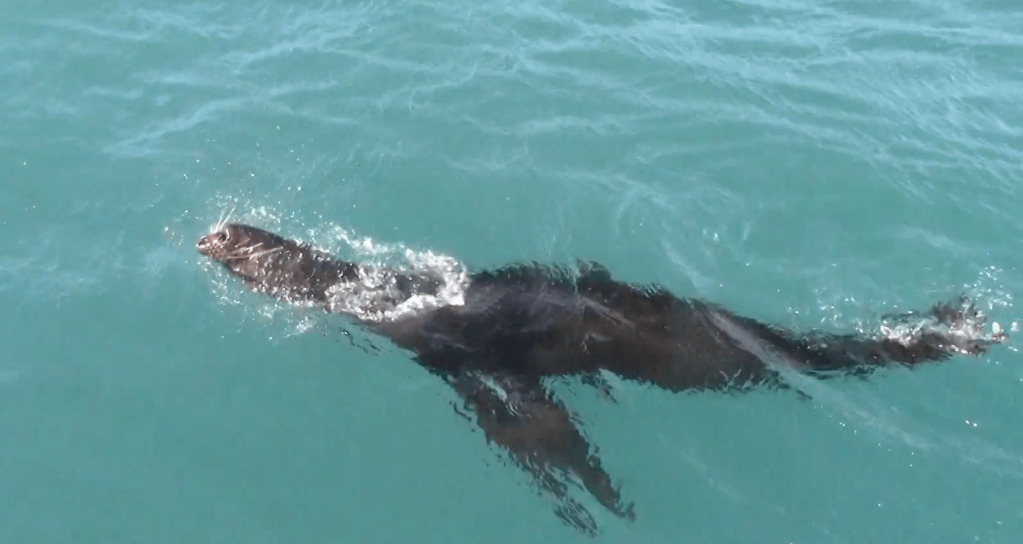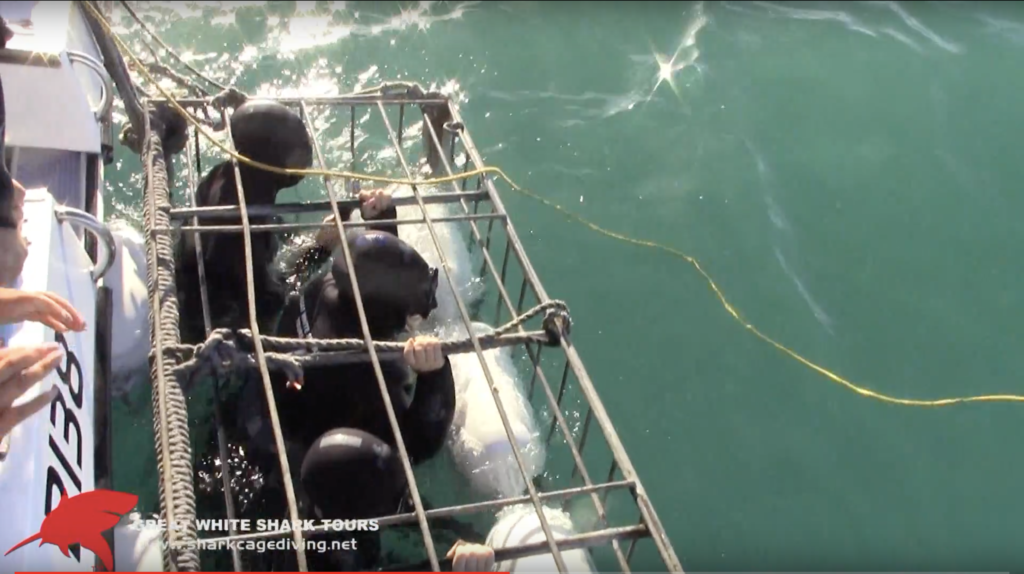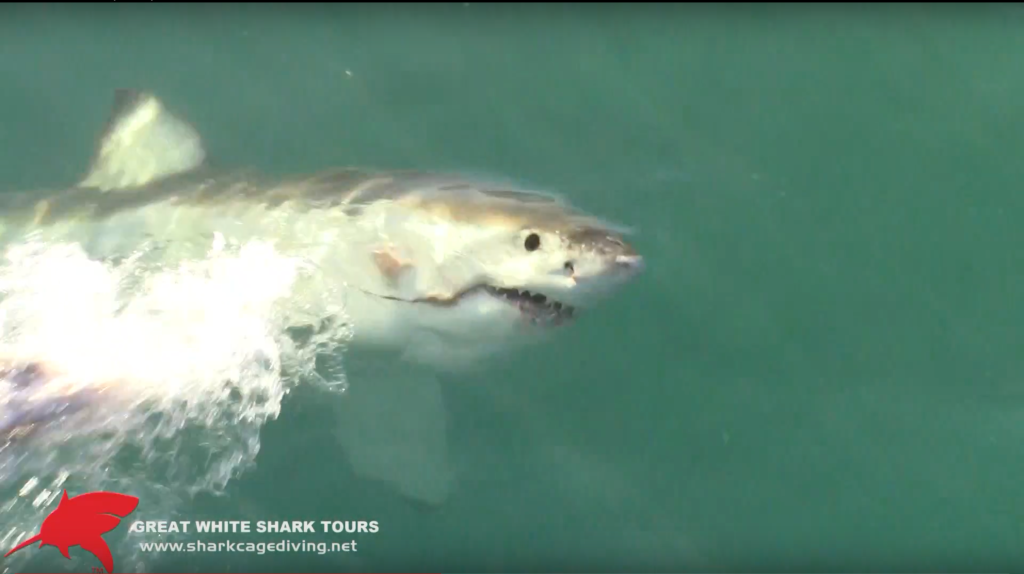White Sharks, or as most people refer to them as Great White Sharks, Carcharodon carcharias, can reach up to 1,500-2,400lbs and can be as large as 6.0-6.5m in length. They are found in most temperate and sub-tropical regions.
They are very strong and powerful swimmers capable of reaching speeds of 60km per hour. White sharks are oviviparous, meaning that they can give birth to live young which hatch and nourish from inside the mother. Once the White shark is born, the juvenile swims off and hunts for itself, no longer being nurtured from the mother. Within the first month in the womb, White Shark jaws begin to develop and are specialized for hunting.
White sharks, like other sharks, have incredible senses. They have the ability to detect the electromagnetic field of another animal in the water column from kilometers away. This sensor is called the ampullae of lorenzini. All sharks have tiny gel filled pores that are located all over their snout, giving them an extra sense for assisting in long distance migrations by detecting earth’s magnetic field.

The vast majority assume that Great White sharks are this ugly dangerous creature because of all the bad reputation they receive. This past weekend I got the chance to cage dive with the White Shark Projects and observed this so called “dangerous monster” for myself. I spoke with marine biologist, Tom Slough, who explained a little bit more about Great White sharks.

Tom discussed how there is one bad video in the hundreds of amazing videos of sharks. There are so many videos on the internet and in the news about shark, especially Great White shark, accidents or attacks. But there are also so many amazing and beautiful interactions between humans and sharks. There are some unfortunate interactions that occur every now and then. But those unfortunate interactions are what people expect and want to see, which is why those videos are so focused on. Most ignore the good nature of sharks and focus on the violent nature they expect from them.
Tom’s focus with the White Shark Projects is to show the world how beautiful and harmless these animals really are by giving the public the opportunity to see for themselves. They are not a threat to the world, but sharks are just like any other human being and will attack if they feel threatened.
Observing these sharks in the wild was a privilege and I want anyone who fears sharks to witness the astonishing behavior of these animals for themselves. It’s unfortunate to hear when people are afraid of sharks or don’t trust them, even though they have never even seen one. Most pay too much attention to that one bad video and overlook the hundreds of incredible videos of them.
We also witnessed many sea lions during our cage dive. Many would expect the White Sharks to rip that sea lion into pieces. But instead, the sea lion swam around happily and free with no fear of those sharks hurting it. We saw the White Sharks and the sea lions interact without any violence.

Sharks are an apex predator at the top of the food chain, where it is very unlikely for any other sea creature to kill them. But somehow sharks are still on the brink of extinction, and this is because of us, humans. There are an estimated 100,000,000 sharks slaughtered annually worldwide. Humans, and the way humans utilize the ocean, is the biggest threat to these apex predators.
Between by-catch and shark fin soup, sharks will continue to decline more rapidly. Shark fin soup is popular and sells for a huge price in China. By-catch is a major problem for sharks, and catching sharks as by-catch has become more intentional for the purpose of fin removal. Most shark species are believed to be over 90% in decline, and most species are known to be extinct because of humans.

Up close, White Sharks are truly one of the most beautiful sharks I have ever encountered. Sadly, however, they are under serious threat by human activity. Today illegal hunting of these animals, overfishing, and bycatch have made Great White sharks a vulnerable species on the IUCN Red List. It hurts to see these animals move closer to extinction because of the selfish needs of humans, which is why I aspire to work closely with these animals and conserve in every way I can. Especially while encouraging others to realize the importance of these animals. Without sharks, the marine ecosystem would fall apart, and will result in things like a major increase in mesopredators.

It was such an amazing experience to be able to cage dive with White Sharks in South Africa, which was the world’s first country to fully protect Great White Sharks in 1991. It was an unforgettable experience and I can’t wait for the next Great White shark adventure!
